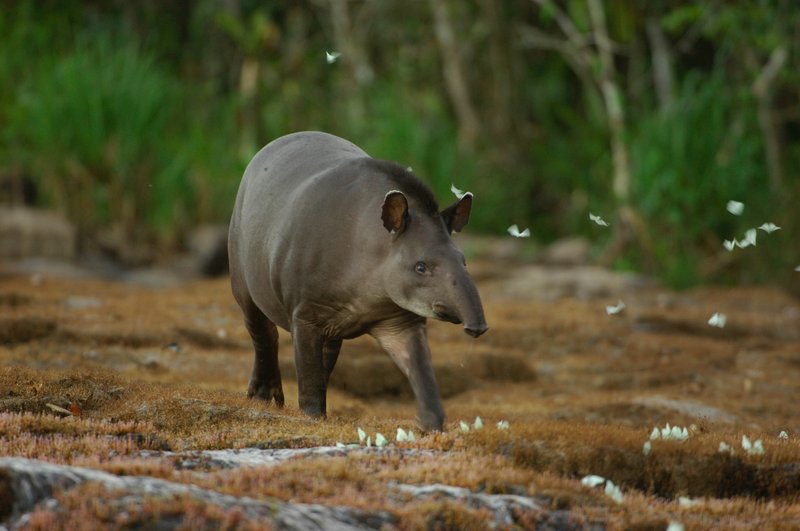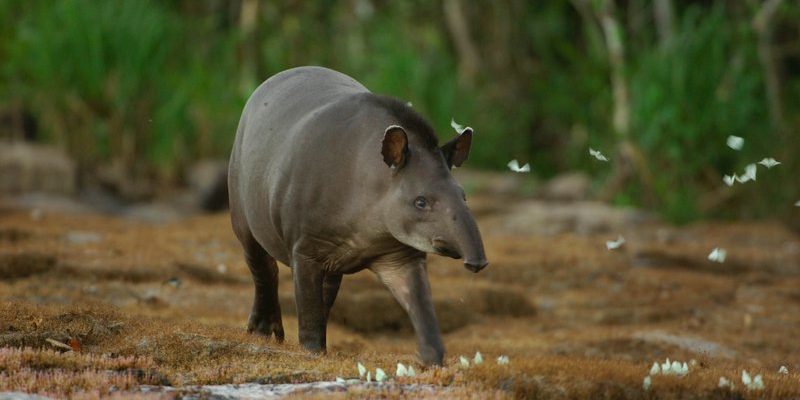
So, is the Brazilian tapir endangered? The answer is yes, and here’s why it matters. The tapir, the largest terrestrial mammal in South America, is struggling due to habitat loss, poaching, and climate change. Understanding the threats it faces and the conservation efforts underway can help us appreciate not just the tapir, but the delicate balance of the ecosystems they thrive in. Let’s dive into what makes this species so special and why it’s essential to protect them.
What is the Brazilian Tapir?
The Brazilian tapir, also known as the South American tapir, is a fascinating animal. Imagine a mix between a pig and an elephant—it’s got a stout body, a long trunk-like snout, and short, sturdy legs. These creatures can weigh up to 660 pounds and reach lengths of about 7 feet. They are herbivores, primarily munching on leaves, fruits, and aquatic plants.
What really sets the tapir apart, though, is its role in its environment. As they feed, they help disperse seeds, which is crucial for maintaining the health of forests. Think of them as nature’s little gardeners, silently ensuring that the plants they eat can continue to grow and thrive. This unique behavior highlights their importance in the ecosystem, particularly in regions like the Amazon rainforest.
Habitat and Distribution
Brazilian tapirs have a range that stretches across the dense forests of South America, from the Amazon Basin to the Atlantic Forest. They prefer wet environments, often found near rivers and swamps. Their love for water isn’t just a quirk; it’s a survival tactic. Tapirs are great swimmers and will often submerge themselves to escape predators or cool off.
However, their natural habitat is quickly disappearing. Deforestation for agriculture, logging, and urban development is shrinking their living space. It’s like if you suddenly had to fit your whole life into a tiny apartment when you were used to a big house. As their habitat shrinks, tapirs are forced into smaller areas where resources become scarce.
The Endangered Status of the Brazilian Tapir
The Brazilian tapir is classified as vulnerable by the International Union for Conservation of Nature (IUCN). This status means that while they are not yet critically endangered, they face a significant risk of extinction in the wild. Their population has been decreasing, mainly due to human activities.
What does this mean in practical terms? It indicates that action is needed to prevent their numbers from declining further. If we don’t step in, we might face a future where these incredible creatures are only seen in pictures or, even worse, forgotten altogether. Honestly, that would be a huge loss—not just for the tapir, but for biodiversity as a whole.
Threats Facing the Brazilian Tapir
The Brazilian tapir faces several threats, and understanding these can help us figure out how to protect them effectively. Here are the main challenges:
- Habitat Loss: As mentioned, deforestation is a major problem. Land cleared for agriculture or urbanization leaves tapirs with nowhere to go. Imagine having your favorite playground destroyed; it’s a devastating experience.
- Hunting and Poaching: In some areas, tapirs are hunted for their meat and skin. This illegal activity not only reduces their numbers but also disrupts the healthy balance of the ecosystem.
- Climate Change: Changes in climate can affect the availability of food and water, making it even more challenging for tapirs to survive. It’s like trying to thrive in an unpredictable environment where resources are dwindling.
These threats don’t just impact tapirs; they ripple through the entire ecosystem. When one species suffers, others do too.
Conservation Efforts for the Brazilian Tapir
Fortunately, there are initiatives in place aimed at conserving the Brazilian tapir and their habitats. Organizations and governments are working hard to implement strategies that can help safeguard these unique animals.
Let me explain some of the key conservation efforts:
- Protected Areas: Creating national parks and reserves helps secure habitats for tapirs. These areas allow them to roam, reproduce, and find food without the threat of habitat destruction.
- Community Involvement: Many conservation projects involve local communities. Educating people about the importance of tapirs encourages them to participate in protecting the species, providing job alternatives that don’t harm the environment.
- Research and Monitoring: Ongoing studies track tapir populations and health. Understanding their behavior and habitats can lead to better management strategies and ensure that conservation efforts are effective.
By focusing on these areas, we can help boost tapir populations and ensure future generations can appreciate these incredible creatures.
How You Can Help
You might be wondering how you can make a difference from wherever you are. Here are a few simple actions you can take to support the Brazilian tapir:
- Spread the Word: Share information about the Brazilian tapir with friends or on social media. The more people know, the more support can be rallied for conservation efforts.
- Support Conservation Organizations: Consider donating to or volunteering with organizations that focus on wildlife protection and habitat conservation. Every little bit helps!
- Reduce Your Footprint: Be more conscious of your consumption habits. Supporting sustainable products can help reduce the demand for land that might otherwise be cleared for agriculture.
Your actions, no matter how small, can contribute to a larger movement toward conservation.
The Future of the Brazilian Tapir
The future of the Brazilian tapir depends on a combination of effective conservation strategies and public awareness. It’s a team effort that requires commitment from governments, organizations, and individuals alike.
Clicking into action now can help change the current trajectory for these remarkable creatures. Protecting the tapir isn’t just about saving one species—it’s about preserving the entire ecosystem they help to sustain.
In conclusion, while the Brazilian tapir is currently facing challenges, there’s still hope. With focused conservation efforts, community support, and awareness, we can ensure that future generations will continue to marvel at these gentle giants. Every step counts in the journey toward protecting the Brazilian tapir. So, let’s step up together for this amazing creature!

